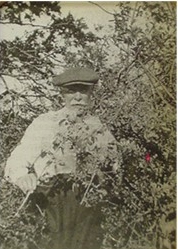History of the Herbarium

Therefore, the history of the TWU Herbarium traces back to the time of the establishment and development of the university and its biology department. Albert Ruth contributed 1/4 of the actual collection, between 1903 and 1927. During the 1930s and 1940s, the collection was further enlarged by well-known botanists such as: Benjamin C. Tharp (1885-1964), who directed the University of Texas Herbarium (TEX) for 45 years after Dr. Mary S. Young; Barton H. Warnock (1911-1998), and C. H. Mueller, who collected mainly from the Big Bend Region; Mary S. Young (1872-1919), one of the first Texas female botanists was the first curator of the University of Texas Herbarium (TEX) between 1912-1919; Dr. Fred A. Barkley, curator of TEX, 1945-1958; Eula Whitehouse (1892-1974), who published ‘Texas Flowers in Natural Colors’ (1936), the first color-illustrated guide to Texas wildflowers. The above list of collectors is far from being complete.
Other contributors to the collection were Dr. Viola Hamilton, professor and chair of the TWU Department of Biology, her collaborators and students at the time. Among those, the most prolific was Mattie Beth Morgan, a 1921 graduate, who contributed with more than 120 specimens to the collection during her studies at TWU and afterwards. She collected mainly from Denton and Tarrant counties in Texas, apparently working with Albert Ruth as indicated by several specimen labels, but also from Long Island, Wisconsin, Dune State Park, Indiana, Petite Point Sable, Michigan, and other places in New England.
After the World War II, the collection was completely neglected and forgotten until one of our lab coordinators, Reta Smiddy Foreman, re-discovered it in the Old Science Building in 1976. The specimens were overcrowded into two big metal cases hidden in a small closet, which was not in use at the time. After the renovation of the building in 1978, there was no room for the herbarium and the cases were stored in the hallway. The metal cases, with tightly closing gasketed doors, were unopened for years and therefore most of the collection is still in very good shape today (the colors of most flowers still show), nevertheless approximately 20-25% of the specimens are in urgent need of repair, according to our estimates. Few specimens are beyond repair. The whole collection is in urgent need of being remounted on modern, acid-free paper sheets.
Smiddy, former assistant curator (2000-2015) and ‘the herbarium caretaker’ from 1978-2000, worked hard on saving and reviving our herbarium. She has received help in authentication of specimens from the Botanical Research Institute (BRIT) in Fort Worth as well as from the local chapter of the Native Plant Society of Texas. University support was obtained in 2001 in raising money for the TWU Centennial Herbarium Project, which resulted in the first public exhibit of specimens for the TWU and Denton communities. The university also provided a permanent exhibit place in the Blagg-Huey Library building, in the form of wall display cases. Mary Evelyn Blagg-Huey, TWU President Emeritus, dedicated the cases with the occasion of the TWU Centennial Celebration. A contribution from the Native Plant Society - Trinity Forks Chapter was also obtained in 2001 to complete the purchase of two more cabinets of archival quality conditions for the purpose of sorting and rearranging the herbarium specimens. The TWU Department of Biology provided funds for two undergraduate student assistants to help with mounting, sorting, and inventorying the herbarium collection, as well as new space for the collection. Herbarium curator, Camelia Maier, PhD, obtained a TWU grant for preparing an NSF grant proposal for the collection to be submitted in 2003.
Page last updated 4:21 PM, October 9, 2023